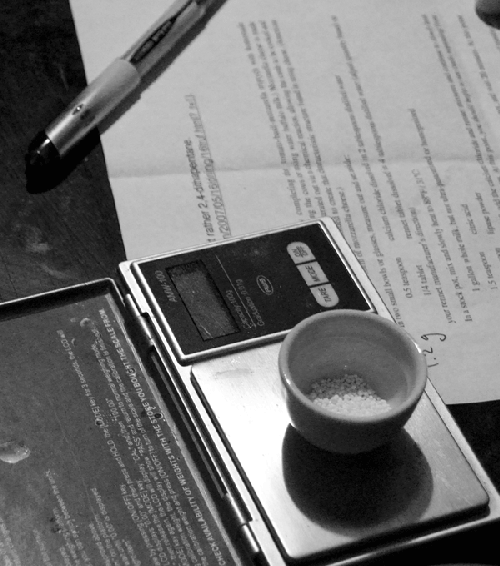1.4. Measuring cups and scales
In addition
to the common items used for measuring (e.g., measuring cups and spoons), I strongly
recommend purchasing a kitchen scale.
You can pour ingredients directly into a mixing bowl by weight,
skipping the need for measuring cups.

You will obtain better accuracy when measuring by weight. Dry ingredients such as
flour can become compressed, so the amount of flour in “1 cup” can vary quite a bit due
to the amount of pressure present when it’s packed (see the sidebar Weight Versus Volume: The Case for Weight). Also, it is easier to precisely
measure weight than volume. Because much of cooking is about controlling chemical
reactions based on the ratio of ingredients (say, flour and water), changes in the ratio
will alter your results, especially in baking. Weighing ingredients also allows you to
load ingredients serially: add 390 grams of flour, hit tare; 300 grams of water, hit
tare; 7 grams of salt, hit tare; 2 grams of yeast, mix, let rest for 20 hours, and
you’ve got no-knead bread.
Use a high-precision scale when working with food
additives.

When choosing a scale, look for the following features:
A digital display, showing weights in grams and ounces, that has a tare function
for zeroing out weight
A flat surface on which you can place a bowl or dish (avoid scales that have
built-in bowls)
A scale that is capable of measuring up to at least 5 lbs or 2.2 kg in 0.05 oz
or 1g increments
If you plan on following any “molecular gastronomy / modernist cuisine” recipes that
use chemicals, you’ll need to pick up a high-precision scale that
measures in increments of 0.1 gram or finer. I use an American Weigh Scale
AMW-100.